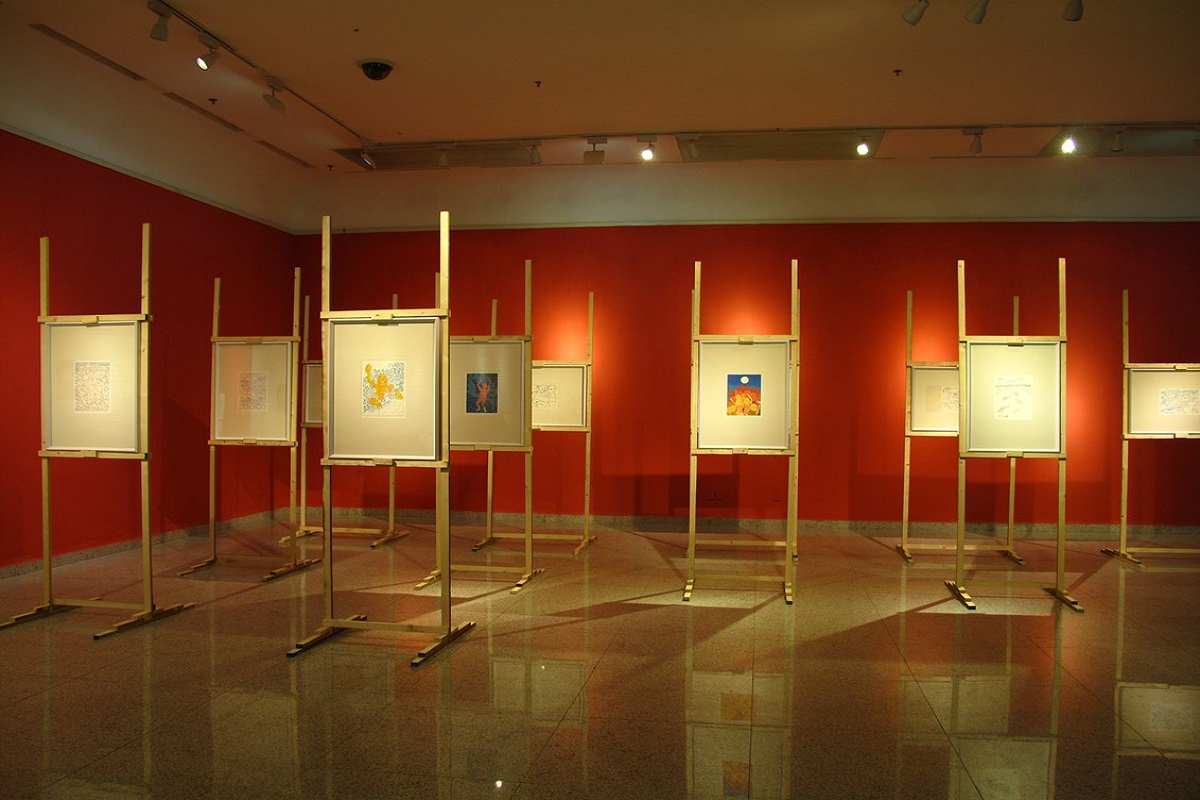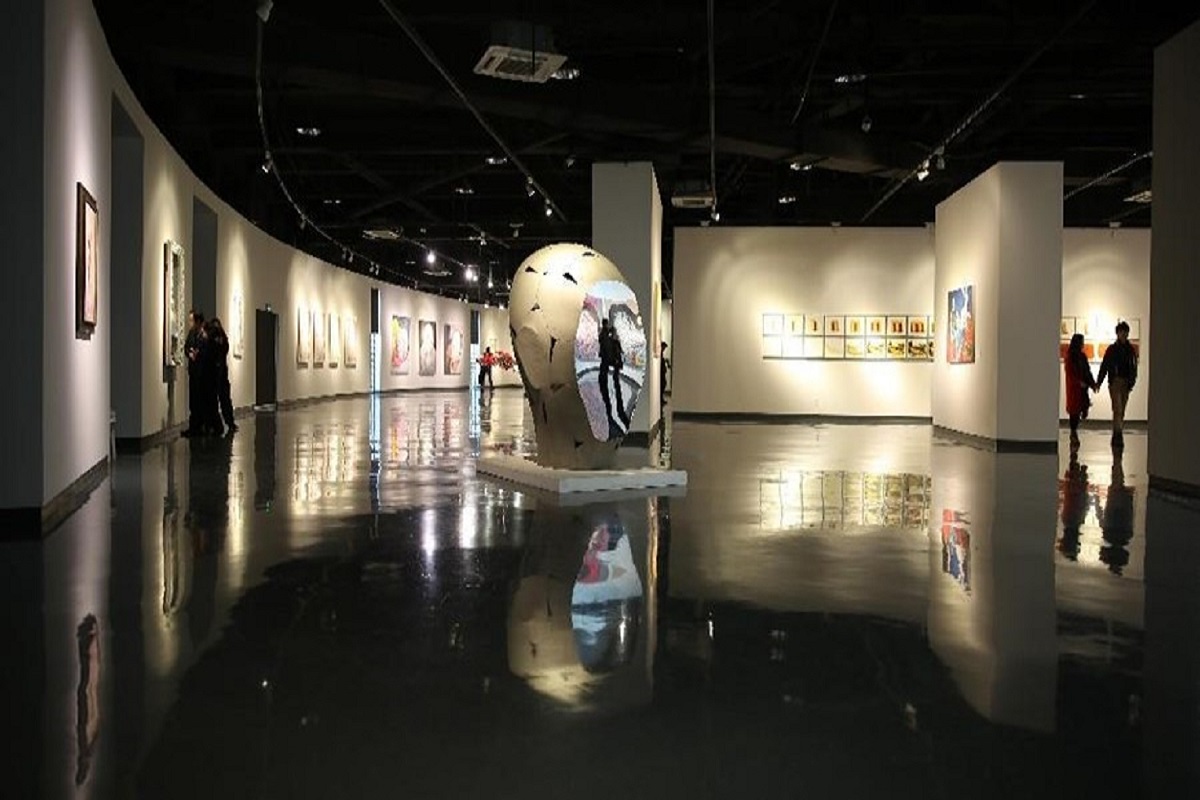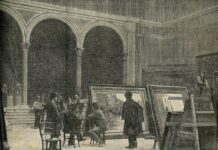Chinese society, a nation between tradition and modernity
Chinese society today is undergoing major changes unseen for centuries. China is grappling with the pain of development stemming from conflicts between old and new, and the collision between traditional and contemporary culture.
These structural changes are manifesting in the transformation from a traditional to a modern nation. China is attempting to adapt to contemporary civilization by adopting a new path, one which leads away from that of both the pre-modern and modern. Social transformation, from an agrarian nation to an industrial powerhouse, and from rural to urban society, will inevitably give rise to cultural transformation.
Chinese society, a bit of history
First of all, traditional and modern cultures have long been in a state of confrontation.
This state has been unresolved since the May Fourth Movement’s inception in 1919 and is identified as the “post-May Fourth” cultural crisis by some scholars. Second, an ideological crisis developed after the Cultural Revolution.
That revolutionary crisis was one of cultural deficiency in terms of imagination and idealism. Third, with the waning of the ideological crisis in 1978, a post-modern psychological crisis, of modern “social anxiety”, emerged.
Chinese society, the breaking of the rules of tradition in the era of globalization
It is clear that contemporary China is no longer what it was traditionally, after 1949, or even during the 30 years before and after the launch of reform and opening up in 1978.
During contemporary globalization, China faces challenges in terms of integration of tradition into modern society, and connection with the world.
China’s hundred-year social transformation revolves around modernity and modernization; in truth difficulties which numerous civilizations have experienced during globalization.
The transition to modernity involves the establishment a modern order of civilization, with a new understanding and definition of modern core values, and of future patterns and pathways of development.
The completion of the transition from traditional society to modern society will involve development of a new understanding of China’s values, patterns, rise, and subjective nature, an exploration of traditional culture’s adaptation to modernity and production of modern values, and a further breakdown of traditional barriers.
Ultimate goal is the construction of a modern order of civilization, that is, the transformation of the value and institutional systems in terms of the economy, society, politics, international environment, and civilization. A pluralistic path outside Western modernity, this re-modernization represents both an unfinished program and an unending experiment…
Two landmark incidents
In his preface to The Theological Origins of Modernity, Michael Allen Gillespie comments that “Ours is a visual age, and in the last twenty years, two images have shaped our understanding of the times in which we live. The first was the fall of the Berlin Wall and the second was the collapse of the World Trade Center towers. These structures were not mere artifacts; they were symbols deeply embedded in the public psyche.
With the destruction of the World Trade Center, globalization suddenly appeared in a new light, not as a one-way street to modernity but as a complex and confusing intersection of paved roads, dark alleys, and mountain pathways.
As a result, we ceased to look forward to a new golden age and glanced instead over our shoulders and sideways into the out-of-the-way places we imagined to be filled with dark figures waiting to attack us. “Gillespie’ description is an explicit one: these were not ordinary, but landmark incidents. They symbolized profound changes in the international political landscape, in deep-seated social structures, in the economic order, in cultural identity, in conceptions of survival, and in lifestyles.
The fall of the Berlin Wall was a direct indication of the end of the Cold War, after which the global order commonly referred to as bipolar — revolving around the United States and Soviet Union — gave way to a new era in which the United States represented unipolar power.
“The events of 9/11 thrust these claims in front of us in a particularly trenchant way, and they left liberal proponents of modernity incredulous. It was easy to understand how someone could be morally outraged by the failure to distribute the benefits of modernity more fairly or widely, or aghast at the environmental impact of modern industrial society, or even distressed by how modernity has ridden roughshod over traditional culture, but how could anyone be opposed to the manifest goods that modernity has to offer, to equality, liberty, prosperity, toleration, pluralism, representative government, and the like?”.
Faced with this type of question from our inner psyche, and the challenges of modernity, we can only revert to the discussion of the challenges of modernity itself. As for modernity, it is commonly seen that “modernity is a secular realm in which man replaces God as the center of existence and seeks to become the master and possessor of nature by the application of new science and its attendant technology.
The modern world is conceived as the realm of individualism, of representation and subjectivity, of exploration and discovery, of freedom, rights, equality, toleration, liberalism, and the nation-state.”
But as we shall see, modernity is better understood as an attempt to find a new metaphysical/theological answer to the question of the nature of, and relationships between, God, man, and the natural world.
Mainland Chinese scholar Wang Hui offers this analysis of a society that has undergone tremendous changes: “With respect to changes in thinking, it was only around the mid-1990s that Chinese intellectuals, recovering from their previous shocks, turned from pondering the past to considering the new era in which they found themselves, a premature era born from the great shock of 1989, which nonetheless had to confront unprecedented social restructuring.”
Wang’s argument shares a striking similarity with Gillespie’s in that “The 1990s constituted a new theater predicated upon the end of the revolutionary century, with meanings in terms of the economy, politics, and culture, and even the military fundamentally changing in the new era.
Without re-definition, even familiar terms, including political party, country, and the masses cannot be used to analyze this era.” As a result, Wang concluded, “the dual ending of the Cold War and the period of revolution implied that this era is not merely an extension reflecting the crossing of the 19th century’s threshold and that one cannot simply adopt 20th-century political models to address the challenges it presents.”
Chinese society, returning to Modernization
During the past century, Chinese society has continually experienced transitions from the pre-modern to the modern in sectors including politics, the economy, culture, and education, but China has remained true to its original aspiration of establishing a modern order of civilization and constantly made endeavors towards that end via the introduction of various social reforms.
Those reforms included the Western Affairs Movement, notable for its reverence of Western learning, the Wuxu Reform, with its emphasis on the national, cultural, political, and educational areas, and the 1911 Revolution, which directly ended over 2,000 years of imperial rule in China.
There was also the New Culture Movement, advocating modern ideas such as democracy and science, and in 1949, the People’s Republic of China was founded. From these reforms, China’s progressive shift from a traditional agricultural society to modern industrial society is clearly evident.
But the rapid development of Chinese society was sure to give rise to a set of cultural crises. Recent reflections on the First Sino-Japanese War offer one perspective on these cultural and psychological crises.
It was the First Sino-Japanese War that destroyed China’s dream to emerge as a new, modern country. First, the cultural crisis reflects the sharp conflict between traditional and modern cultures ongoing since the May Fourth Movement.
The rise of China’s “nationalist fever” has doubtless, in turn, permitted the revival of Confucianism, which had been neglected for nearly a century.
Second, an ideological crisis developed following the Cultural Revolution. While the Cultural Revolution had consistently combatted tradition in the field of ideology and culture, in everyday life it had itself developed its own “feudalism”, “religiosity”, and “traditionalism”.
After the end of the Cultural Revolution, reconstruction of the social order began, particularly with the resolution of social crises due to ideological emancipation and, post-1978 reform and opening up.
Nonetheless, feelings of loss of faith and belief began to spread across society. The poet Bei Dao said, “Even a baked fish still dreams of returning to the sea. “However, despite the fact that the people are not “baked” by “burning passion”, the reality of survival and their environment still inhibit them from dreaming of “returning to the sea”.
Third, remodernization has given rise to a psychological or mental crisis.In the rush to develop into a powerful nation, China has inevitably faced challenges of various forms arising from its rapid development and huge social change. Loss of faith and the secularization and commercialization of culture have tended to push people towards worship at the altar of money. Society is permeated with anxiety.
Alongside social development, noticeable phenomena, including an advancing state sector alongside a retreating private sector, widening disparities in social wealth, the petrification of social class, a widening rural-urban divide, ecological damage, and environmental pollution, all impress upon us the urgency with which a modern order of civilization must be established.
Meanwhile, it now seems indisputable that, “Against the backdrop of global pluralism, a nation’s true strength lies not only in its military power and economic development, but also in its knowledge and culture, and most especially a set of modern core values (including liberty, democracy, human rights, justice, pluralism, governance, and environmental protection). In the final analysis, development according to the paradigm of modern civilization is necessary.”
Chinese society, the social transformations
This section focuses on transitional society and social transformation; the existence of transitional society is sure to bring about social transformation, and disruptive changes in people’s ways of thinking and living.
Transitional society was both a unique social form in transition and a representation of the transformation of Chinese society from one form into another. This involved two sets of social shifts. For example, abolition of the imperial examination system and the opening of schools in 1905 led to fundamental changes in Chinese academic thought and culture.
1911 Revolution introduced the concepts of democracy and republicanism, transforming notions of legitimacy concerning the political rule.The direct consequence of social transformation is political transformation.
Changes brought about by these transformations are best exemplified by the transformation from an agricultural to an industrial society, and from a post-monarchical dynasty to a democratic nation (i.e. political modernization), as well as by the transformation from an era of study of Confucian classics to one of the studies of science (i.e. cultural transformation).
In fact, the key of the social transformation has been the massive shift from the traditional to the modern. The strategy of reform and opening up disrupted a domestic situation dominated by class struggle and led to a shift from socialist planning to a market-oriented economy. It has thus served as a nonnegligible transformative factor in the establishment of civilized social order.
Remodernization: constructing a modern order of civilization with chinese culture character
“The idea of a modern age or, as it was later called, modernity, was part of the self-understanding that characterized European thought from the time of Bacon and Descartes.”
Modernization concerns the transformation from the traditional to the modern. For China, modernity means continuous reform of the social system. This change in the social system has forced us to find new modes of thought and survival, and new solutions for reshaping the world in which we live.
This also reveals the core cultural meaning of remodernization, that is, an understanding of China’s challenges.
But also, a reflection upon them, their solutions and our situation, based on reality.
In his book Problems in Modern China: Mission, Purpose, and Methodology, Qin Xiao puts it like this: “China’s social transformation aims to shift the country from a pre-modern (traditional) society to the one of modernity.
This transformation started in the late Qing Dynasty and has lasted for over a century… and to date, remains an ‘unfinished project’ (Habermas).
To raise this issue again, and to proceed in an orderly manner for the future and destiny of the Chinese nation, while shouldering their social and historical responsibilities, is incumbent upon politicians, the social elite, and the public.”
In the editor’s note, the Boyuan Foundation and editorial board of Modernity and China’s Social Transformation also state that “China’s modernity transformation is a trans-century, unfinished project, a historical mission requiring the redefinition of modern core values, and future patterns and pathways, and an insurmountable reality in the determination of China’s future direction.”
Chinese society, the “impasse”
It is easy to see that the traditional order of civilization in pre-modern society has collapsed, but a modern order of civilization, adapted to modern society, has yet to be established. Modernity in the western world has continually corrected itself and progressed through ongoing self-reflection. China’s remodernization has drawn historical lessons and experience both from socialist practice and, to a certain extent, from capitalist countries.
From the perspective of remodernization, China should incorporate traditional culture into its modern order of civilization, endowing it with a Chinese cultural character.But the achievement of this goal is a task that will occupy an entire generation, perhaps even several.
Chinese society, the features of China’s contemporary art
We can see that China’s contemporary art has, over its three decades of development, reflected changes in the wider social structure.
It has presented the diverse characteristics of the times over varying social and historical stages of development.
Particularly in the new century, multiple factors — the survival of urban culture, renewal of ideology, the rise of popular culture, the advent of the era of images, and the impact of globalization — have rendered art inseparable from changes in social structure and cultural thought.
It is undeniable that general conclusions concerning trends in the development of contemporary art are not matters to be summed up in one or two sentences. But we can at least derive this hint: on the one hand, contemporary art has undergone dynamic development during the new century; on the other, its dynamism and immediacy have also given rise to semantic ambiguity, and complex, diversified narration.
Over the past decade, contemporary art has presented multiple modernities in juxtaposition, but meanwhile, also had to confront consciousness of issues and standpoints, value identity, and critical spirit.
It is precisely because of its pioneering role in the process of realization, and representation of the criticality of consciousness of standpoint and critical spirit in the progress towards modernity that contemporary art has been able to achieve transcendence, reflectiveness, and innovation during its development.
Indeed, the past decade could be termed contemporary art’s decade of transcendence, reflectiveness, and innovation, and thus, a stage in which contemporary art has prospered in a way.
The artistic ferment
To a certain extent though, contemporary art has been shrouded in a false veil of prosperity, reflecting factors including an era of the popularity of art museums, the unceasing emergence of various arts districts and private art agencies, the repetition of similar biennial and triennial exhibitions, the in-depth engagement of transnational commercial art galleries, frequent international shows and exchanges, unlimited circulation of albums and various art publications, and, perhaps most particularly, the shell games and falsification of auction records by the market and auction houses.
However, the diversity of contemporary art cannot be determined by a single value.
The co-existence of new visual approaches and diversity expressed through new social forms has undoubtedly enriched and developed art’s varied trends.

Remodernization: 2014 Wuhan 3rd Documentary Exhibition of Fine Arts”
What remains indisputable is that the visual expression, and spiritual aspirations, of the artists participating in “Remodernization: 2014 Wuhan 3rd Documentary Exhibition of Fine Arts” have been widely varied, and have also mirrored various aspects of contemporary social change in China, of our common living environment and our shared difficulties.
Through their innovation in visual culture, they present profound rethinkings of the cultural collisions and blending that have occurred on the global cultural landscape, along with the experience of anxiety attendant to rapid change in social reality.And this, in fact, is the epitome of contemporary China.
These differentiated visual expressions deliver the rapidity, excitement, and drama of social change, three factors that, in just over a decade, have thoroughly overturned our previous understandings of Chinese society’s economic structure, cultural identity, living habits, and value identity.
These do not merely embody the artists’ differing understandings of modernity or represent a pure social practice, but also a process of spiritual reproduction, communicating the reality that desire and temptation are inevitable.
At present, during China’s explorations of modernity, and in particular, as modernity and post-modernity intermix, this is a problem that is simply inescapable.
What topics do the artists prefer?
Contemporary society exists in a state intertwining elements of the pre-modern, modern, and re-modern, with the socio-political, economic structural order, and socio-cultural simultaneously undergoing radical change.
In this situation, the focus of art has been driven far beyond the scope of style, language, material, and other similar factors.
Meanwhile, however, the artistic community remains concerned about issues including ecology, the environment, cultural identity, women’s rights, survival and rights, localism and globalism, ethnic groups and territory.
What is indisputable is that, while the complexity of China’s history and reality has driven artists’ engagement in the impassionate contemplation and insightful expression of social reality and cultural values, the true power of contemporary art stems from its consciousness of the problems and stance, value identity, and critical spirit expressed in its works, most especially those to be seen at “Remodernization: 2014 Wuhan 3rd Documentary Exhibition of Fine Arts”.

Read also: China, the mighty élites and the state – Il ruolo delle élites di oggi



